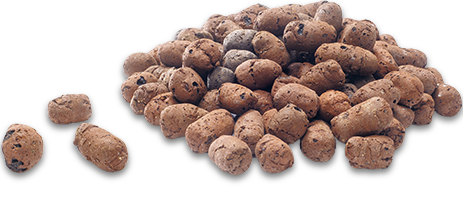
Eca
Saves Agriculture Soil By Using Waste Fly Ash & Mining Clay.
ECA is round pellet structure produced by firing natural clay at temperature of 1200°C. The result is a hard, honeycombed structure of interconnecting voids within the aggregate. The particles formed are rounded in shape and generally range in size from 0-30mm; these are processed to the required grading, depending on the final use. ECA is an extremely light weight, strong and thermally insulating material.
History:
ECA (Expanded Clay Aggregate) was developed about 1917 in Kansas City, Missouri, USA, to the production in a rotary kiln of a expanded aggregate known as ( LECA) Haydite which was used in the construction of USS Selma, an ocean-going ship launched in 1918.
In Europe, LECA commenced in Denmark, Germany, Holland (Netherlands), UK and Middle East.
properties

Low Density

Excellent Fire Resistance

Shape

Decomposability

Compressive

Earthquake Resistant

Sound Insulation

Environmentally Friendly

Excellent Thermal Insulation

Low Coefficient Of Thermal Expansion

Water Treatment

Hign Resistance to Water Absorption
technical
specifications

technical specification of eca
-
Partical Size
0-5 mm, 5-10 mm,
10-15 mm, 0-30 mm
-
Bulk Density
300 to 750 kg.m3
-
Cylinder Compressive Strength
0.6 to 3.0 N/mm2
-
Dry Thermal conductivity
0.09 to 0.10 W/mk
-
Surface Alkalinity
7 to 9 pH
-
Water Absorption
18 to 20 % of sixe
applications
Geotechnical
Road, Railway, Fill For Airport Runway, Land fill, Drainage, Port, Underground Conduits & Pipelines, Dead-end bridges, filling, Water Filtration, Fill Behind Retaining Walls, Fill on Elevated Structures, Bridge Applications.
get in touch
Nexus Buildcon Solutions
Off N. H. 8A (Bamanbor-Morvi),
Mesariya Road, Rangapar Village,
Tal. Wakaner, Dist. Rajkot, Gujarat, India
Copyright 2015 Nexus Buildcon Solutions.
